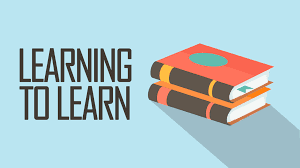"Learning the first language at home and at school"
Hello, guys welcome back to my blog, so in this blog, I want to explain about learn the first language at home and at school.
I also have the video presentation so for further explain you can see in my video presentation above.
Learning language is natural and babies are born with the ability to learn it.1 All children, no matter which language their parents speak, learn a language in the same way.
Basic Stages of Language Learning
There are three basic stages in which children develop their language skills.
Stage One: Learning Sounds
When babies are born, they can make and hear all the sounds in all the languages in the world. That’s about 150 sounds in about 6500 languages, though no language uses all of those sounds.
Stage Two: Learning Words
At this stage, children essentially learn how the sounds in a language go together to make meaning. For example, they learn that the sounds m-ah-m-ee refer to the “being” who cuddles and feeds them, their mommy.
Stage Three: Learning Sentences
During this stage, children learn how to create sentences. That means they can put words in the correct order. For example, they learn that in English we say "I want a cookie" and "I want a chocolate cookie," not "Want I a cookie" or "I want cookie chocolate."
Differences between mother language/home language and school language/official
Home Language
1. Begins with telegraphic speech
2. Is a natural part of daily life
3. It started no basis in grammar
4. Doesn’t require conscious effort
5. Is based in listening as a first
6 Doesn’t require instruction
School Language
1. Can begin with full sentences
2. Is a new aspect in the learner’s life
3. It has a basis in grammar
4. Requires conscious effort
5. Resource Involves technical knowledge of the language
6. It’s require instruction
First language acquisition is a long
process that continues well
beyond childhood so, by
definition, it cannot be
complete for any child learner.
Adult learners can rely on a
number of useful resources when they learn a new language. They can analyze language in an abstract way. This ability will allow them to compare patterns and.linguistic forms that are similar or different in their mother tongue and in the other language. Knowing at least one language very well, adult learners can hypothesize quite deliberately about features of another language.
By contrast, children cannot make use of these advantages yet, or at least there are significant differences between various age groups in the extent to which they can do so. For example, a class of six-year-olds will be largely unable to reflect on how their first language works, and will show no interest or inclination to notice language forms in either their first or second language. They will pick up and learn the second or foreign language if they are having fun and if they can work out messages from meaningful contexts.
All babies and young children need to be talked to so that they can receive input and begin to learn to participate in interactions. All humans have the inborn capacity to produce baby talk-special simplified talk directed to babies. Even children do this with their younger siblings. Research in the 1970s, such as the study by Catherine Snow in 1972 (in Fletcher & Garman, 1986), showed that mothers' speech to their babies was slower and more repetitive than their normal speech to adults.
Language use at home
At home with parents/carers
and siblings, children are
already confident
communicators. Their parents/carers share most of their experiences, which makes it easier to talk about things. Parents/Carers also tend to take the lead in conversations and are eager tob
work out their children's half
formed ideas. There is no need to be explicit and precise with language use at home. Parents/Carers maturally scaffold their children's language in dialogues.
Language use at school
At school, children are often
required to talk about past
experiences, future plans, or
other people's perspectives,
i.e. things that are not related
to the immediate context.
They will continue learning
about their first language at
school, and they may come across a standard version of their first language which might be quite different from a dialect used at home. With regard to more complex grammar, they will learn to handle clause types, complex sentences, and the rules of connecting ideas in speaking as well as writing. They will also acquire formal, literary, historic, and archaic phrases and come in contact with varieties of their mother tongue, such as other regional accents. Throughout the school years, the rate of vocabulary learning will continue to be very high.
Reference :
Pinter Annamaria. (2017). Teaching Young Language Learners, second edition. Oxford: Oxford University Press.
Foster-Cohen,S. (Ed.). (2009). Language acquisition. Basingstoke: Palgrave Macmillan
Lightbown,P.M.& Spada,N. (2013). How language are learned, fourth edition. Oxford: Oxford University Press.



Ulasan
Catat Ulasan